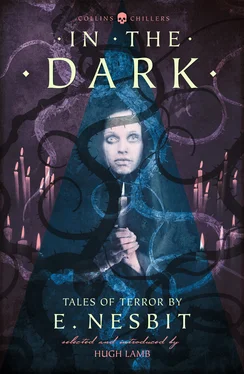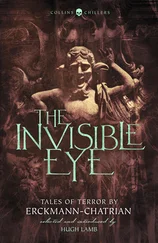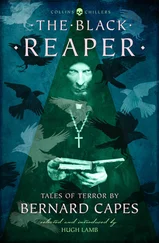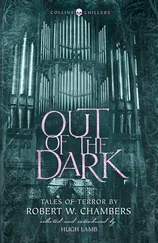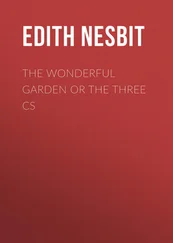Husbands and wives are not seen in the best light in her stories. The husbands are either longing for dead wives or seeing the ones they’ve got die. There seem to be few Hubert Blands in the stories; perhaps not surprising – his thrusting type, with a penchant for the occasional punch-up, is not conducive to a creepy story.
One romantic triangle, in ‘The Pavilion’, is very strangely resolved, by an unusual relic of the sixteenth century. First published late in her career, Edith Nesbit seems, in this tale, to be striking off in a new direction. It certainly stands out from the rest.
Two stories – ‘The Five Senses’ and ‘The Three Drugs’ – bear the hallmarks of a rudimentary attempt at science fiction. The wonder potion story was in vogue in the 1890s, after Stevenson’s Dr Jekyll and Mr Hyde . In both cases, Nesbit brings in her own phobias, more so than other writers on the theme.
There are traces in most of the stories of what seems to have been her dominant phobia – the dead returning to life. In 1896, Edith wrote about a childhood visit to see the mummified corpses in the church of Saint Michel, Bordeaux. They made a deep impression:
A small vault, as my memory serves me, about 15 feet square … round three sides of the room ran a railing, and behind it – standing against the wall with a ghastly look of life in death – were about 200 skeletons, hung on wires … skeletons with the flesh hardened on their bones, with their long dry hair hanging on each side of their brown faces, where the skin in drying had drawn itself back from their gleaming teeth and empty eye-sockets. Skeletons draped in mouldering shreds of shrouds and grave-clothes, their lean figures still clothed with dry skin, seemed to reach out towards me … I was paralysed with horror … not daring to turn my head lest one of those charnel-house faces should peep out at me.
These charming exhibits (who on earth thought them suitable for children’s entertainment?) were ‘the crowning horror of my childish life,’ she wrote. ‘It is to them, I think, more than to any other thing that I owe nights and nights of anguish and horror, long years of bitterest fear and dread … my children, I resolved, should never know such fear. And to guard them from it I must banish it from my own soul.’
It is all too easy to see works of fiction as standing for something significant to the author’s life. Too often, I suspect, works written with an eye to making a few pounds quickly are invested by critics with a significance far beyond their author’s intentions. Edith Nesbit’s stories were written with money in mind, no doubt about it. But I think there may have been enough of the author in them to make them doubly interesting. You can see Edith Nesbit scribbling away, trying to push back the sight of the Bordeaux mummies creeping up behind her chair or standing in the corner, watching her with dried-up eyes. Or thrusting away the vision of being alive in her coffin, sensitive to all around her but unable to attract any attention to her plight. Or even trying to exorcise the demon of Hubert Bland rampant, impregnating anything he could get his hands on, even under their own roof.
Edith Nesbit’s biographers give her ghost stories minimal treatment. Anthea Bell and Noel Streatfeild never mention them. Very unfairly, Doris Langley Moore brushes Nesbit’s stories aside, in her otherwise warm and affectionate book, as being ‘singularly ineffectual and now deservedly forgotten’. Julia Briggs, on the other hand, does not dismiss them, but merely mentions them, though she does go at length into ‘Man-Size in Marble’, which she sees as having sexual connotations. With the amount of sex in Edith’s life – her own and other people’s – that would not be surprising.
I hope readers today will approach Edith Nesbit’s stories with a sympathetic eye. In a genre now heavily laden with massive novels and complex plots, the bald simplicity of her tales of terror comes as a pleasant and refreshing change. They certainly deserve a new audience after all this time.
Hugh Lamb
Sutton, Surrey
May 2017
Although every word of this tale is true, I do not expect people to believe it. Nowadays a ‘rational explanation’ is required before belief is possible. Let me, at once, offer the ‘rational explanation’ which finds most favour among those who have heard the tale of my life’s tragedy. It is held that we were ‘under a delusion’, she and I, on that 31st of October; and that this supposition places the whole matter on a satisfactory and believable basis. The reader can judge, when he, too, has heard my story, how far this is an ‘explanation’, and in what sense it is ‘rational’. There were three who took part in this; Laura and I and another man. The other man lives still, and can speak to the truth of the least credible part of my story.
I never knew in my life what it was to have as much money as would supply the most ordinary needs of life – good colours, canvasses, brushes, books, and cab-fares – and when we were married we knew quite well that we should only be able to live at all by ‘strict punctuality and attention to business’. I used to paint in those days, and Laura used to write, and we felt sure we could keep the pot at least simmering. Living in London was out of the question, so we went to look for a cottage in the country, which should be at once sanitary and picturesque. So rarely do these two qualities meet in one cottage that our search was for some time quite fruitless. We tried advertisements, but most of the desirable rural residences which we did look at, proved to be lacking in both essentials, and when a cottage chanced to have drains, it always had stucco as well and was shaped like a tea-caddy. And if we found a vine or a rose-covered porch, corruption invariably lurked within. Our minds got so befogged by the eloquence of house-agents, and the rival disadvantages of the fever-traps and outrages to beauty which we had seen and scorned, that I very much doubt whether either of us, on our wedding morning, knew the difference between a house and a haystack. But when we got away from friends and house-agents on our honeymoon, our wits grew clear again, and we knew a pretty cottage when at last we saw one. It was at Brenzett – a little village set on a hill, over against the southern marshes. We had gone there from the little fishing village, where we were staying, to see the church, and two miles from the church we found this cottage. It stood quite by itself about two miles from Brenzett village. It was a low building with rooms sticking out in unexpected places. There was a bit of stonework – ivy-covered and moss-grown, just two old rooms, all that was left of a big house that once stood there – and round this stone-work the house had grown up. Stripped of its roses and jasmine, it would have been hideous. As it stood it was charming, and after a brief examination, enthusiasm usurped the place of discretion and we took it. It was absurdly cheap. The rest of our honeymoon we spent in grubbing about in second-hand shops in Ashford, picking up bits of old oak and Chippendale chairs for our furnishing. We wound up with a run up to town and a visit to Liberty’s, and soon the low, oak-beamed, lattice-windowed rooms began to be home. There was a jolly old-fashioned garden, with grass paths and no end of hollyhocks, and sunflowers, and big lilies, and roses with thousands of small sweet flowers. From the window you could see the marsh-pastures, and beyond them the blue, thin line of the sea. We were as happy as the summer was glorious, and settled down into work sooner than we ourselves expected. I was never tired of sketching the view and the wonderful cloud effects from the open lattice, and Laura would sit at the table and write verses about them, in which I mostly played the part of foreground.
Читать дальше
